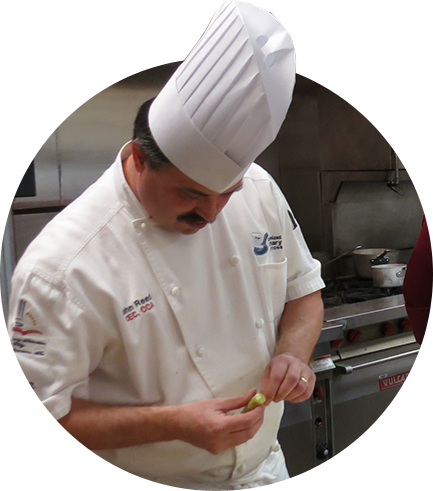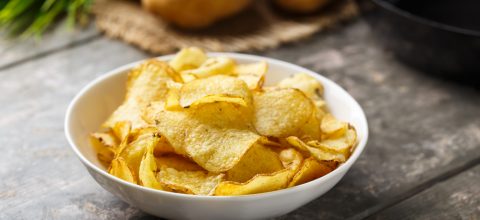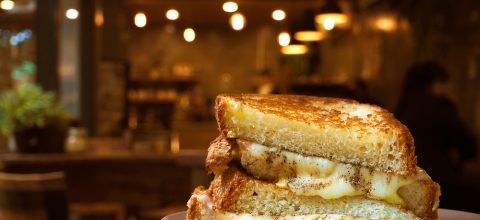If I was asked the question what are the most important things you need to consider when coming up with a new dish or a plate presentation? I would have to say it is, in reality, fun. What I mean by fun,is that you need to know why you are making this plate of food in the first place and are you going to get excited about creating it. Is there an inspiration, a request from a client or just for the “hell of it” because you feel like eating something good. In my business I get a lot of requests for “one-off” menus for a single particular event or celebration. The challenge here is that most of these requests are uniquely focused on a theme or particular combination of cuisines. This past week I had to shift back and forth from a family wedding of 350 people who needed a purely authentic Vegetarian Indian menu as part of a western style ceremony and the next day I was writing a menu for a cocktail reception inspired by Shakespeare’s literary works. In both cases, I used the same process. I go through the following steps to ensure that my final dish has some conceptual back up and is grounded in some elements of proper cooking or cuisine. Some of this is logical, some is totally”out there” but it is the ultimately the thought process of the chef. So here are things that need to go into/on to a plate:
1) A knowledge of the Theme or Inspiration:
The present project I am working on is for a Wedding Reception where the couple would like to incorporate some Vietnamese dishes into their menu. Unless you are an expert or have a first hand knowledge of the foods of Vietnam either by birth, lineage or time abroad, it is a unique cuisine. I start by doing basic research by looking at the traditional dishes that most people may be aware off such as the noodle dish Pho or a Bahn Mi Sandwich. I then look at the core ingredients associated with the cuisine from spices, condiments, components of the dishes. There are a lot of items such as chili paste cilantro, fish sauce and cinnamon sticks that start to stick out in my mind. I write these down on a pad of paper and start seeing patterns as well as service styles. I ask my self how can I incorporate a bowl of Pho into a wedding?
2) How is this dish intended to be served?
In this case, the bride wants to have little dishes or a buffet station that is part of the overall wedding meal. I also have to consider who will be eating this dish. I don’t think that the grandparents want to be walking around slurping noodles or the bridesmaids trying to navigate a bowl of broth while wearing a long dress and heels. So is Pho a choice? I think so if designed correctly. I want to give the guest the experience of the foods of Vietnam in the flavors of the dish. If you have ever been to a Vietnamese noodle shop, there are some components of the food that stand out. For me its, the intensity of the broth from the meats, charred onions, cinnamon sticks and fish sauce. It’s the plate of fresh bean sprouts, cilantro, fresh chilis that is served on the side. It’s the condiments on the table, from Nuoc Cham, chili paste and fermented fish sauce that give me the direction to create a dish that’s full of complexity. There are flavors here that are useful even if they don’t show up as a traditional dish.
3) What are the boundaries of cooking?
I have to be realistic sometimes and ask the question, do I have the equipment or the staff who can properly execute a dish as it was intended. If you travel, you also have to eat. For some, eating what the locals eat is an important part of the experience. A very simple dish of noodles and broth at 6 stool counter on the outskirts of the famous Tokyo Fish Market will never taste the same as when I make it at Japanese Udon home. There are many contributing factors such as repetition, ingredients, subtle finishing techniques and ultimately the atmosphere which affect that memory. I had that experience and because of that I working diligently to try to get as close to recreating those flavors and aromas in my noodle dishes. For our example, I have never been to Vietnam and don’t have a mental or sensual memory of an authentic meal. So all I can do is educate my self and count on my ability to visualize what a dish would taste like in my mind and on my palate. The cooking techniques applied and used around the globe are all based on heat transfer whether conduction or convection and the use of both dry and wet mediums. So there is some knowledge to be had on understanding the fundamental cooking methods of the cuisine. For most kitchens and culinary teams these unique techniques from other parts of the world are unfamiliar processes and not a regular part of daily operations. Breaking down a recipe into familiar processes such as marination, par-cooking, slow cooking and a la minute methods can help drive the creative process and provide a common reference point for the culinary team. In our case of Pho, the are many of these techniques involved but the one which has some potential is the pouring of the broth over a bowl of noodles. Can this action be employed to create a “feeling” or an experiential part of the dish? I can start to formulate a plan.
At this point of the development process I am still writing rough notes and expanding my concepts in my mind. I know I want to put a twist on bowl of noodles. The question is still, can my culinary team put together a dish that will in some way take the guests of this particular event to a noodle stand that they remember from a trip or family’s memories of the kitchen table?
4) What ingredients do I have to work with?
In today’s food media and marketing efforts, there is a continual push to stress, sustainable, local, seasonal, artisan in our food vocabulary. Then there is the need to make the public aware of gluten-free, vegan, trans-fat free ingredients produced on machinery that may contain peanuts or tree nuts. This can just be the starting point of a menu writing challenge, as with our case. We have the family favorites, personal dislikes and personal expectations of the person/person’s writing the check to pay for this bowl of noodles that I have yet determined. So how do you navigate this? You need to ask good questions, process the information and make a good guess on what what’s left and what will taste good together on a plate. In our case maybe a bowl. This is also a personal choice on the person writing the menu. In my case, I look at traditional flavor profiles and then put a little twist on it but making sure I hit all of the basic flavor profiles. Making sure that the sweet, salt, sour, bitter and especially the Umani profiles are working together. The seasonal influence is highly important not so much for the ingredients but also for the style of the food. You try to look to have fresh, raw, lightly cooked items in Spring and heavy slow cooked components in the Winter. In the fall, for our wedding, I want to see tomatoes, grilled meats, vibrant herbs, may be some smoked items. Colors should be vibrant. Acidic tones of pickled vegetables need to be fruit juices not from a deep long salting processes. Can I incorporate a local influence such as local tomato grower, an all natural soy sauce or hand pulled noodles? Now that I have a better list of ingredients. I start a new sheet of paper and write out some more details in my descriptions. It is kind of like my own secret language or code. It may not make sense to someone other than me. So I am going to work with a light rice noodle with a marinated grilled chicken thigh which has lemon grass, ginger, fish sauce and some dried shrimp paste in it. I will probably choose a fresh shiitake mushroom instead of dried for some Umami and then work in some smoked/charred tomato into the soup base. Then it stops. I put the notes away, turn of the screen on my computer and go grab a cold adult beverage. Why because it is amazing what a clear head will come up with. Space is the key when writing menus. You need to walk away from the pen sometimes.
5) It’s all in the words.
This is where it comes down to a good sense of balance. Dishes in print on menus that are going to be presented to a guest can be written with a raw “Bauhaus” sense of minimalism to a grandeur “Baroque” tone. I like neither. Noodles, Chicken and Tomato don’t give me a very clear picture of what I am eating. However, Hand Pulled Organic Rice Noodles embellished with Farmer Stew’s Free Range Amish Chicken and Heirloom Sunburst Tomato Broth is over the top. Neither give me a sense that this is a Vietnamese dish. Where is the balance or excitement? It comes from knowing the right sequence in listing ingredients, adding clues about their preparation and creating an anticipation that the person reading this description is sold at first read. There should be no questions about what you are going to get served. If there is, then you are loosing opportunities to serve your guests a great plate of food.
Now that I walked away from my noodle dilemma, had a good nights sleep and a the concepts rattled around in my mind, I think I know what we are going to serve:
Vietnamese Inspired Pho Cups with Lemon Grass Grilled Chicken, Thin Rice Noodles,
Poached Egg, Cinnamon Mint and a Charred Tomato Shiitake Broth.
I am going to set this up as an action station where a chef serves these pre-made cups by pouring the hot broth over the noodles and garnishes with the Mint and then a drizzle of a mixture of Fish Sauce, Chili Paste, Lime Juice and Sesame Oil over the herbs as it served. It will be presented in a handled cup on a saucer with a spoon. I am going to cut the noodle is small pieces so it is easy to eat with a traditional spoon. It can also be sipped if so desired.
This dish has all the flavors of Vietnam but is still approachable by the crowd I expect to serve. Now some chefs may have issues or say this is not authentic but as I stated earlier, my needs were based on an interpretation of the cuisine for a particular event. If I was doing a street food station or concept, totally different story. This is way I think about writing menus. It is not the only way but one way that works for me.
Enjoy!










